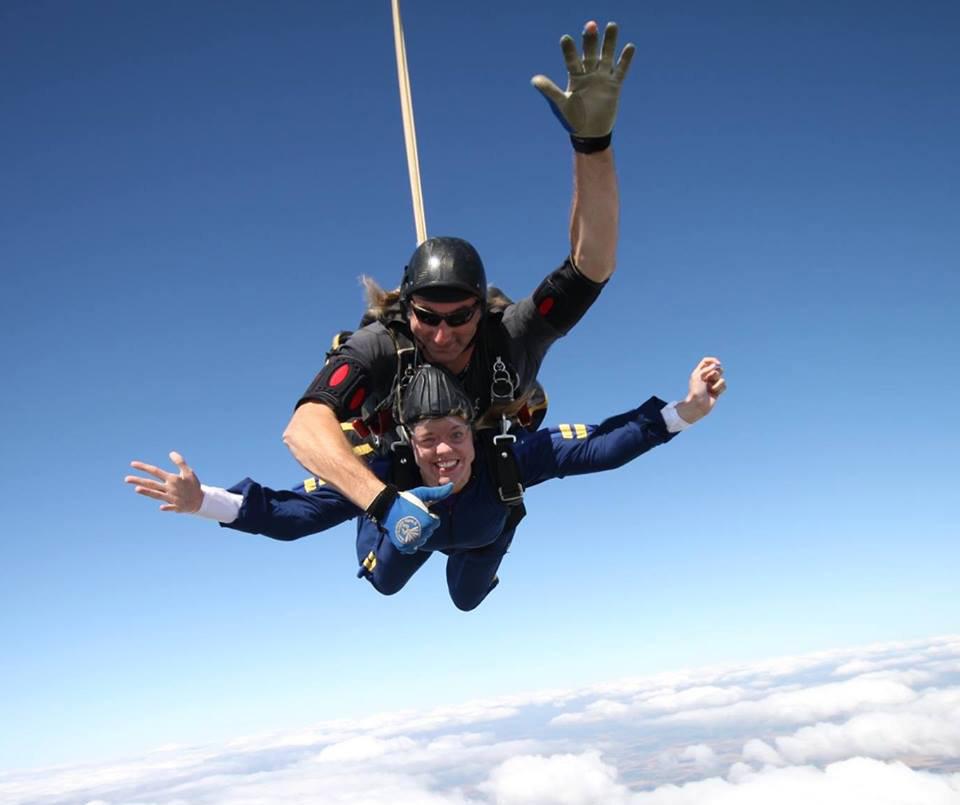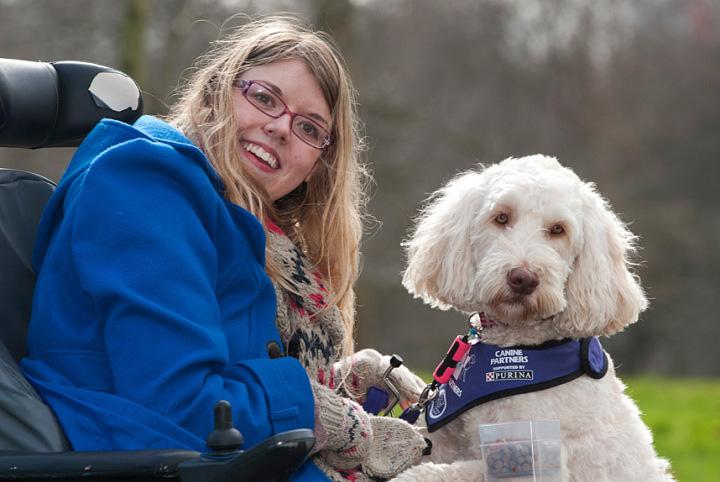
10 minute read
Katy’s story
My relationship to postural care and my body generally hasn’t always been great, but it is something that now, as an adult with Cerebral Palsy (CP), I am taking control and ownership of. Growing up, my experiences of the various health interventions were quite negative – often things were done to me rather than with me.
My early experiences of medical interventions were rooted in the medical model and gave me the message that I was wrong and needed to change by standing straighter or walking steadier. This wasn’t helped by being surrounded by non-disabled children who I longed to be like. The interventions designed to improve my posture made the divide more obvious because I had to sit in my supportive green chair whilst everyone else sat in red chairs and I was strapped into a standing frame whilst everyone sat on the carpet.
Advertisement
I understand children don’t always have the level of capacity to be fully aware of the reasons for things but I was shut out of the discussion so much that it made me resentful and rebellious. Interventions often felt as if the goal was to ‘normalise’ me rather than being embedded in my everyday life with a focus on enabling me to do the things that mattered to me. Maybe if I had been given an age-appropriate understanding of why things were needed and been included more, my splints wouldn’t have been “lost” on so many occasions…
Being involved
The saving grace was when I was selected to be in a clinical trial examining whether lycra body suits improved the posture and abilities of people with neurological conditions. This was different to all my other experiences as I was at the centre of everything and my thoughts and opinions mattered. I was the one to set the goals which were based on what was important to me at the time. I was fed up of being left out of playtime games so one of my main goals was to play hopscotch. Whilst this wasn’t a key activity which would be vital to my future, the coordination and strength I gained from working towards this goal transferred to other areas of my life. This was a more dynamic approach than my physiotherapy sessions which, whilst sometimes fun, didn’t seem to correlate to my everyday life in a meaningful way from a child’s perspective.
I worked with a multidisciplinary team who all worked towards my goals from their own specialisms. They saw me in clinic, school and home which allowed them to gain a holistic picture of my life and get to know me as a rounded individual. This enabled them to tailor the program further to my interests such as researching a doll’s buggy which would be steady enough for me to use as a walking aid and using my competitiveness to beat my walking targets on the markings in the corridor. I was treated as an individual and never made to feel like a set of symptoms needing to be ‘fixed’.
Everything was explained to me and my cooperation was never taken for granted. I was in charge of the process from choosing the colour of the suit to what should be included in the training they gave my school. The suit gave me many benefits, enabling me to stand and walk and improved my abilities in all areas of my life but it wasn’t an easy process. The suit was extremely tight, hot and uncomfortable especially as it wasn’t designed to be sat in so I had to stand for five hours a day. Therefore, my cooperation was key to its success. In other encounters with healthcare my experience of pain and discomfort was often glossed over, giving me the message that I shouldn’t complain, but this time the team made space for me to share this and it was always acknowledged and respected.
When I decided to stop wearing the suit, this decision was respected despite me being a child – it was the first and sadly one of the few experiences of having agency over my body when I was growing up.
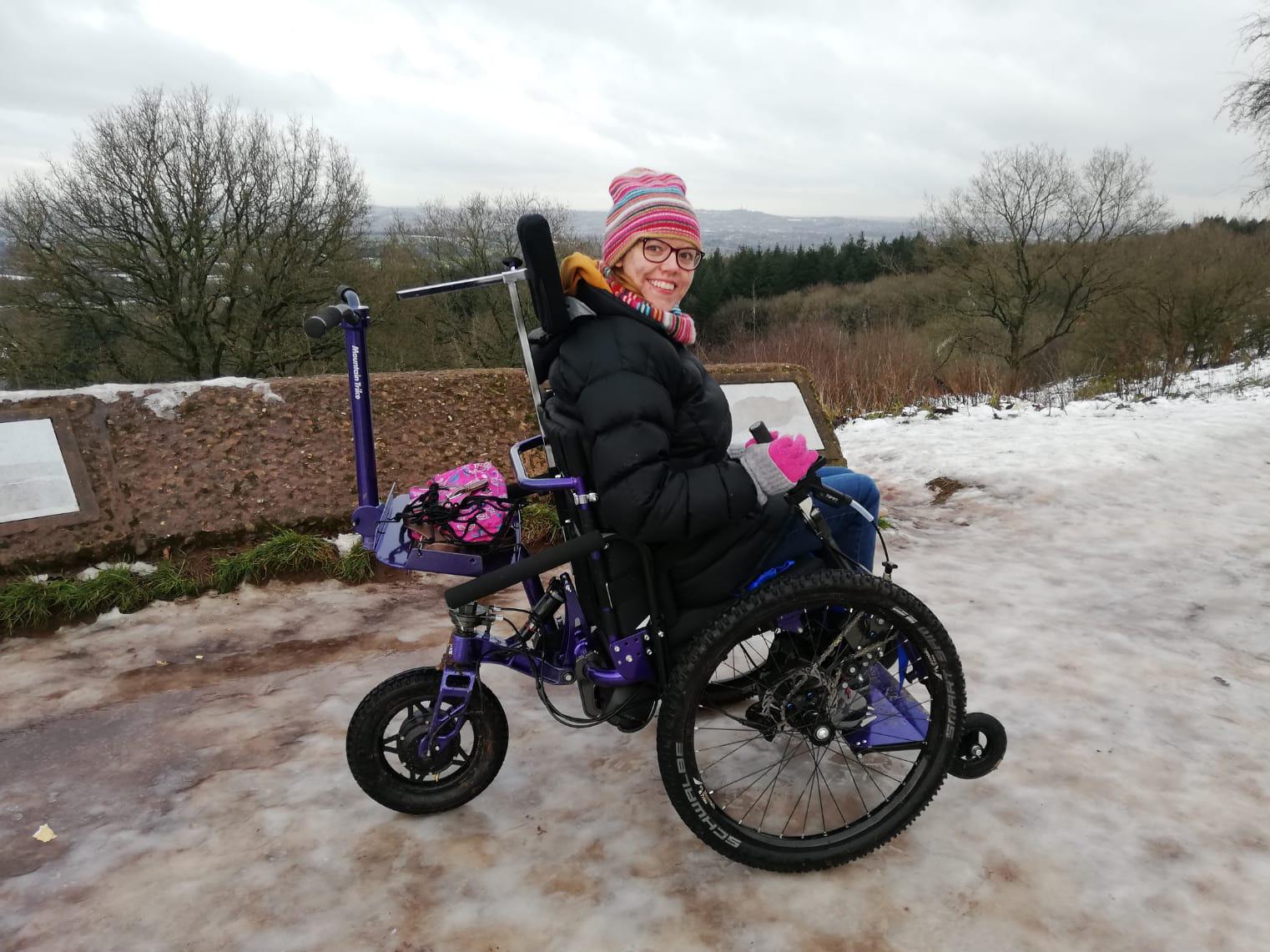
My wheelchair unlocked independence
From the age of twelve my powered wheelchair has liberated me, allowing me to access the world independently. As a large portion of my day is spent in my wheelchair postural care has been crucial for both maintaining my body position and enabling me to access my environment. Sometimes it’s a delicate balancing act between the two.
I was once given a seat with large lateral supports to hold my body upright. I found this too restrictive and resented how this made my everyday activities hard as my movement had suddenly been restricted. The team at wheelchair services compromised with a rounded backrest which gave me some support whilst also allowing the movement I valued. I was anxious when they later decided I needed a pommel to separate my knees because I knew standard pommels would be too difficult for me to remove myself which would prevent me transferring and using the toilet independently. They instead worked around my capabilities to design a pommel I could use. This meant the pommel did get used because, for me, sacrificing my independence for my body to be in a good position wasn’t an option I was going to take as a teenager.
My wheelchair is a prime example of my social and health needs having to be considered in equal measure. When ordering a new wheelchair there is a conversation about my seating needs as well as the daily activities that are important to me. Dog walking is a central part of my life now - my chair is often covered in a thick layer of mud as I’m not one for sticking to paths, so I push NHS wheelchairs to the max! This has been further enabled through a stable wheelchair with a high level of suspension, and a supportive headrest and seating to hold me in place over the bumps. When deciding which footplates to order the team even worked with my assistance dog to see which were the easiest for her to move so she could continue helping me transfer.
Unfortunately, health and social needs can also be a source of contention when it comes to funding. In recent years I have been experiencing debilitating neck spasms. As the main trigger is reaching and looking up, a physiotherapist recommended a riser should be added to my new wheelchair. This was refused by wheelchair services who classed it as a social need which led me to fight for a year to prove it was a health need in order to have it funded. Since having the riser on my current chair I experience less spasms as I can reach higher shelves with ease as well as feeling more socially included because I can now be at eye level with my non-disabled friends – when you have spent over half your life constantly being faced with people’s bums, that’s huge!
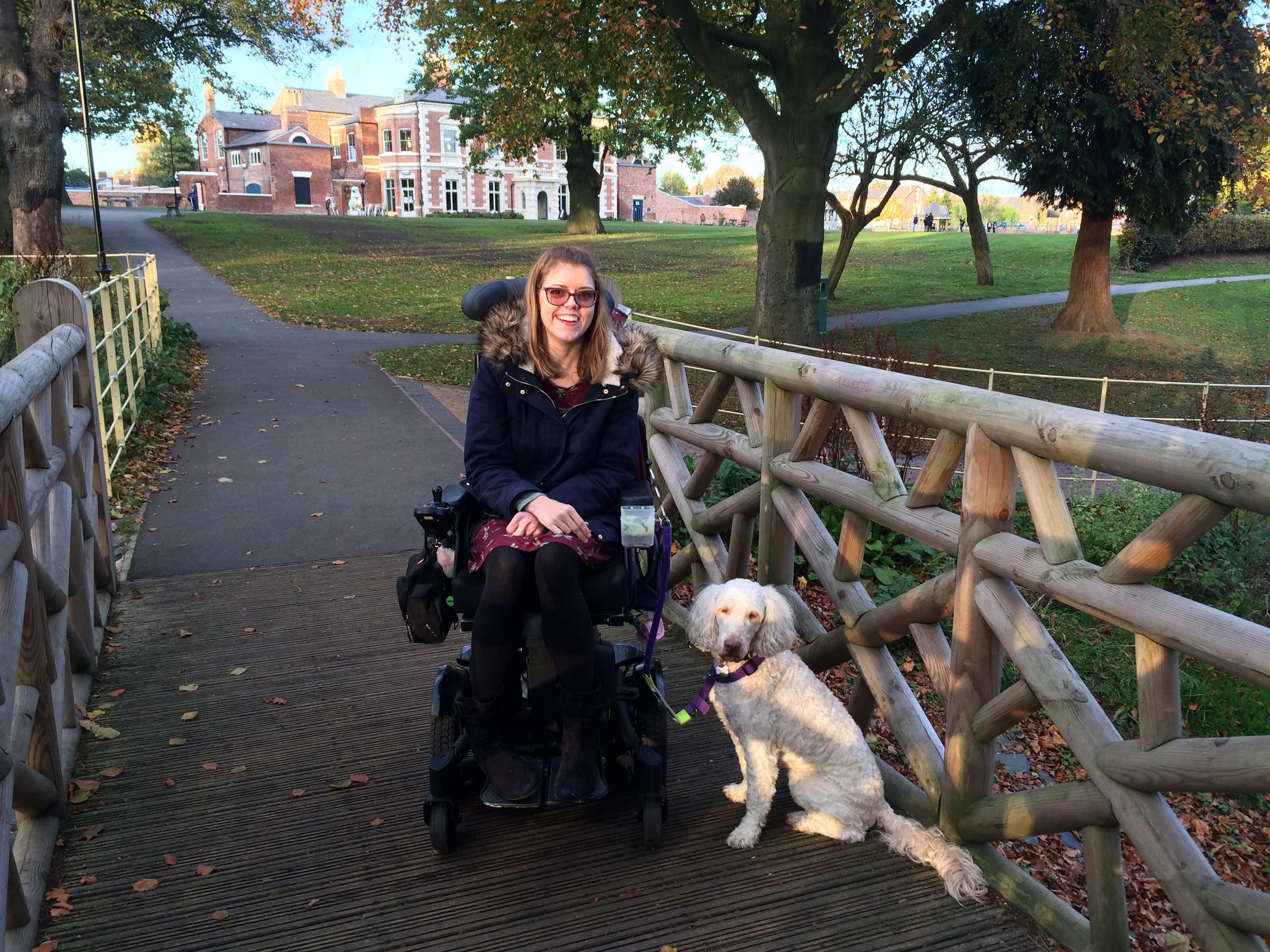
CP is for life not just childhood
The input and equipment I received as a child mostly vanished when I turned 18. In addition, there’s a distinct lack of research focused on adults with CP. I was told I can only access time limited support when an issue arises which seems a short-sighted approach - the importance of maintaining things is overlooked. Whilst having my allocated six weeks of pain management sessions I asked the physiotherapist if any services could support me long-term and I was told no because my CP wasn’t going to get better and I just had to live with it.
The only specialist input I have now is a yearly review at a spasticity clinic. The clinic uses a questionnaire to assess how a person’s spasticity impacts on various areas of life. I was particularly impressed to see intimate relationships included in this as no other health professional had broached the subject before despite this being an important activity for most adults. My CP impacts on this but can be alleviated using positioning cushions – something many disabled adults remain unaware of. The team have also respected my preference to use physical activity over medication to control my spasticity and we have worked together to strike a balance. My plan was to try stopping the medication this year as I felt I’d built my physical activity up to a point it was controlling my pain and spasticity well. However, the lockdown and closure of all the leisure services I relied on prevented that and I am still struggling to build my physical abilities back up five months after places reopened.
It is now my responsibility to maintain my postural care, pain management and abilities as much as I can even though I don’t have the professional knowledge or financial resources to fully meet this need. However, it has freed me up to find activities which I can do in the ‘real world’ alongside other people. I am a member at a fully inclusive gym and my programmes focus on my goals and challenging me within my capabilities. I also have a membership at a local hotel’s leisure facilities as their heated pool relaxes my muscles and allows me to benefit from the exercise as opposed to the full body spasms I experience in most other pools due to the cool temperature. I have become a huge fan of rock climbing which allows me to be out of my wheelchair and focus on what my body can do. It has given me greater understanding of dealing with my spasticity by allowing spasms to come and pass because going against it makes climbing harder. I see a sports massage therapist and have educated her in how CP affects my body and we work together to manage my spasticity so my life is easier.
By taking on the ownership for my postural care needs I have become more aware of my body and this increased understanding has allowed me to know what works best for me. Hormonal changes significantly impact on my body tone so I know I need to be on top of my postural care during this time to minimise pain and be more forgiving when increased spasticity makes daily life harder, especially as stress increases the spasms further.
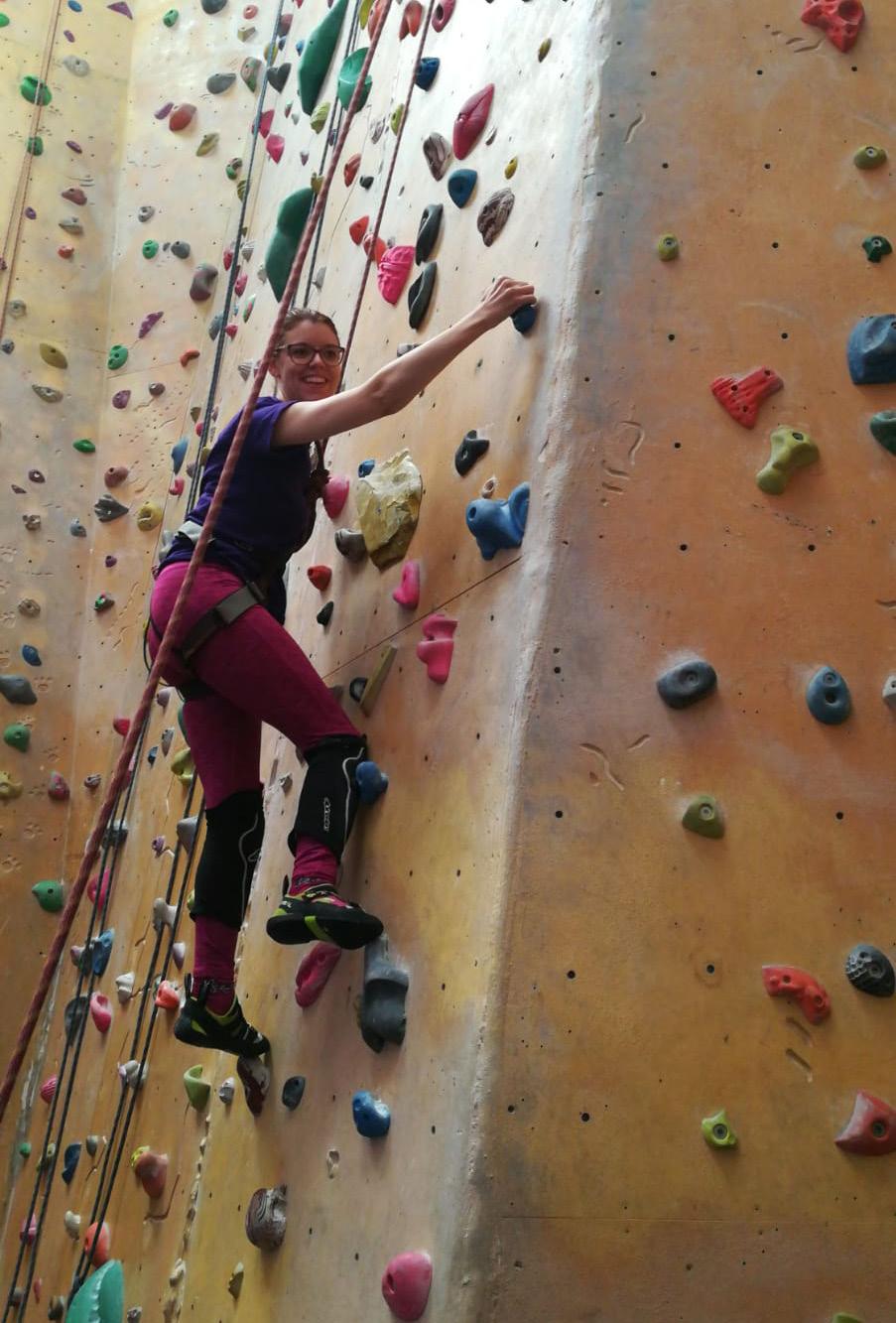
I have learned to adapt things so I’m able to do daily activities whilst also maintaining my postural care. To minimise the spasms when I eat, I developed an unhelpful habit of contorting my body into uncomfortable positions to steady my arm. This was taking a huge toll on my body so I invested in a height adjustable table to make eating easier. I know from older friends that CP can put a huge strain on our bodies due to the increased wear and tear which increases with age. I would like to have a family one day so I feel a pressure to maintain my current abilities and posture so this is as easy as possible. However, it can be difficult constantly juggling these needs with my everyday life. I know a long day out in my wheelchair should be followed by an evening not being in my wheelchair but this doesn’t always fit into my plans and I pay the price in terms of increased spasticity and pain if I choose to ignore this need. When I don’t get the balance right it has a knock-on effect on how I can function in my everyday life.
Throughout my life I’ve come to understand that postural care cannot be looked at in isolation, but instead needs to be fully incorporated into a person’s life and tailored to their goals and lifestyle. The person should be involved in decisions as much as possible and the focus should always be on enabling them to live their best life and access the things that are important to them.
